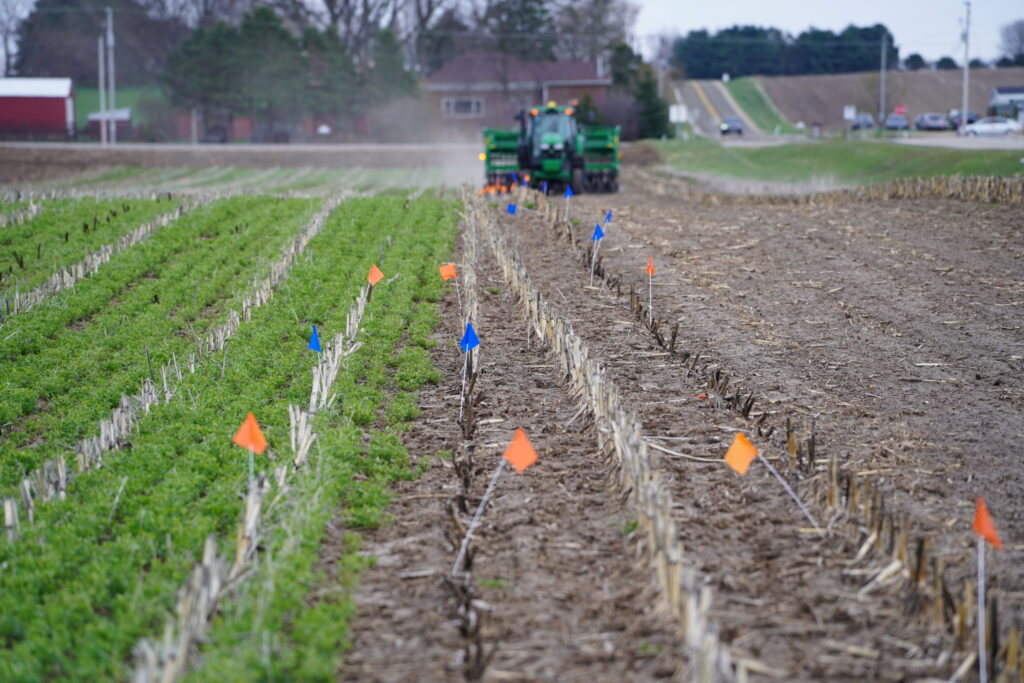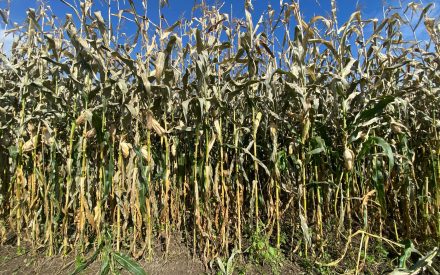
Alfalfa has an establishment-year yield issue. Corn has a runoff and soil erosion issue. But planting the two together could be a unique solution to mitigate both problems.
By interseeding alfalfa into corn, the corn can act as a companion crop for alfalfa establishment. When the corn silage is harvested, the alfalfa provides immediate cover crop benefits for otherwise bare soil. In the following year, alfalfa produces yield akin to a second-year stand, allowing the grower to bypass lower establishment year yields.
Dr. John Grabber with USDA ARS Dairy Forage in WI has been working with a host of other UW researchers to establish best management practices for the establishment of alfalfa within corn silage. He recommends corn is seeded at a lower rate than usual (28,000-32,000 plants/acre) and an earlier maturing hybrid is selected. Alfalfa is then seeded into the corn before V1 at standard seeding rates.
This system comes with more intensive management, with two different planting dates (first corn, then alfalfa), and a few passes with the sprayer for best results. One of the most important pieces of that management is the use of a foliar fungicide in all but the driest years to reduce the presence of diseases in the alfalfa canopy that would hinder stand establishment. The resource below provides more information on best management practices and recommendations from our ongoing research.

 ▶ Watch: Focus on Corn Silage
▶ Watch: Focus on Corn Silage Mycotoxins and Silage - How to Feed the Dairy
Mycotoxins and Silage - How to Feed the Dairy 2024 Wisconsin Corn Hybrid Performance Trials
2024 Wisconsin Corn Hybrid Performance Trials ▶ Watch: 2025 Crop Input Cost Expectations
▶ Watch: 2025 Crop Input Cost Expectations


